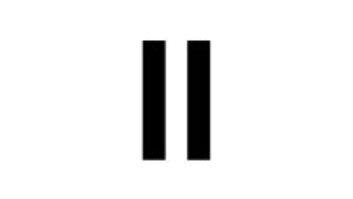
Mathieu Habegger tests his interactive application. It is based on RadioVIS and has scalable vector graphics, allowing it to be used for more complicated touchscreen tasks such as voting for favorite songs. GENEVA — RadioHack, which took place during the European Broadcasting Union’s Radio Week Feb. 11–15, showed a slightly more casual approach to EBU gatherings.
No neck ties at this event. Instead lots of oversized sweaters, full beards, green-monochrome-looking displays and even a barefoot attendee — an ideal stage for cutting-edge research and development.
RadioHack is probably the least formal EBU event, confirms Mathias Coinchon, EBU senior project manager. It is oriented toward hardware and software developers from different organizations, including non-EBU members. “The idea for this event is to bring together inventors to share projects and ideas, fostering the creation of a community of radio developers.”
Hands on
The workshop began with a brief presentation and then moved to a “classroom” where everyone could delve into the practical aspects of the various issues on tap. Evaluation boards, tuner prototypes, software-defined radio platforms and test-bed hardware were at the participants’ fingertips. The result was not mere text scribbled on a notebook but people actually developing software code and anything else necessary to convert ideas into working schemes or alphas, immediately testing and further developing them.
At this particular event, “hack” signifies pushing things a step ahead by modifying them. Until recently, tuning a radio receiver required upgrading its components, replacing at least some quartz oscillators, capacitors, inductances, integrated circuits or semiconductors. In the RadioHack cavern, however, there was not any solder on the table — just serial cables, USB adaptors, LAN connectors and a bunch of keyboards and laptops. Welcome to the year 2013.
During the event, Mathieu Habegger, software developer at SwissMediaPartners AG, showcased an interactive application based on RadioDNS. Currently, the listener can “tap” on the display to, for example, add a song to his or her favorite playlist or add a podcast to a download list. The system can’t distinguish where on the screen the listener touches, only the time the tap took place.
But by using the scalable vector graphics format, Habegger was able to add true interactivity features to hybrid radio. SVG is an XML-based vector image open-standard format for two-dimensional graphics that supports interactivity and animation.
He managed to get a complete interactive system on-air at RadioHack: The receiver display showed the title of the song being played, the thumbnail of the relevant album cover and a list of tracks. Among the latter, each listener could vote for the song he or she wanted to hear next by just tapping on the radio display. It was also possible to mark a song as “don’t like.”
Real innovation
The central system collected all the input from the audience, showing real-time ranking, and when each song was over, it then played the most voted track-from the aired shortlist. Voting is just one of the possible applications. Others include buying the relevant track or album, getting more information on a specific item, receiving targeted ads and also controlling the receiver.
On the first day of RadioHack only the song title appeared on the receiver display. After Habegger’s presentation, and thanks to his hard work and some documentation received from Frontier Silicon, by the end of the second day the thumbnails for each song and receiver controls appeared (and worked!) on the screen.
Another example of innovation was that of Paolo Casagranda and Francesco Russo, researchers at the RAI Center for Research and Technological Innovation, in Italy. Their goal was to overcome the need to develop a specific mobile app code from scratch for each operating system running on target devices. With the rise of “connected radios” and “smart TVs,” the number of operating systems is continuously growing, as is the cost associated with the development of mobile apps.
The researchers developed their multiplatform app on a “meta-platform” — Phonegap, a distribution of Apache Cordova. Phonegap is a free and open source framework that allows developers to create mobile apps using standardized Web APIs for platforms and cross-platform Web technologies like HTML, CSS and JavaScript.

Developers at work in the RadioHack classroom. By introducing Phonegap, Java and HTML5, it is possible to develop a single “reference” app code, and then create a specific version of the considered app for each OS by reusing nearly 90 percent of the “reference” code, they said. Casagranda and Russo also presented a 3D prototype of the RadioVIS player on an LG Optimus 3D smartphone, featuring a glasses-free 3D display.
RadioVIS3D is a proposed extension to RadioDNS’ RadioVIS, supporting both 2D and 3D slideshows. Currently, just a few devices feature autostereoscopic 3D displays, but many more could appear in the future, according to Casagranda.
New functionalities
Floris Daelemans, media and technology expert at VRT in Belgium, pointed out that a radio stream (live or podcast) offers only basic information, like channel, start time, end time (as read from the clock) and a short description of content type.
This seriously affects the user experience, he said, for example by not allowing the listener to easily skip back to the very moment when the anchorperson asks his or her guest a question. This is partially due to the lack of a “timecode” in radio signals, which up to now prevented developers from linking ancillary data to a specific time frame, he explained.
Further, the way in which a receiver receives “timecode” information has not yet been standardized. “With the massive adoption of digital consoles, any radio station could easily (and automatically) get great information about what’s happening or being aired at that time: switch on mic 1, play song ‘x’ from archive ‘y,’ commercial break, telephone call from landline ‘z,’ and so on.” Daelemans said.
The idea is to enrich content by anchoring “prepared” content and adding “live” information, to enable the navigation of the radio stream, allowing item-based chaptering and thus introducing the listener to new functionalities and greater user experience, he added.
Davide Moro reports on the industry for Radio World from Bergamo, Italy.












